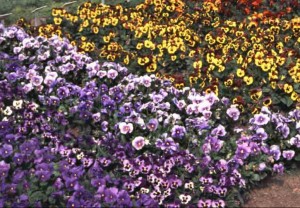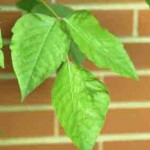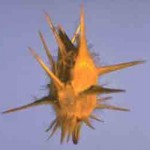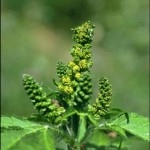Lecture 1: Goals & Principles
go.ncsu.edu/readext?415043
en Español / em Português
El inglés es el idioma de control de esta página. En la medida en que haya algún conflicto entre la traducción al inglés y la traducción, el inglés prevalece.
Al hacer clic en el enlace de traducción se activa un servicio de traducción gratuito para convertir la página al español. Al igual que con cualquier traducción por Internet, la conversión no es sensible al contexto y puede que no traduzca el texto en su significado original. NC State Extension no garantiza la exactitud del texto traducido. Por favor, tenga en cuenta que algunas aplicaciones y/o servicios pueden no funcionar como se espera cuando se traducen.
Português
Inglês é o idioma de controle desta página. Na medida que haja algum conflito entre o texto original em Inglês e a tradução, o Inglês prevalece.
Ao clicar no link de tradução, um serviço gratuito de tradução será ativado para converter a página para o Português. Como em qualquer tradução pela internet, a conversão não é sensivel ao contexto e pode não ocorrer a tradução para o significado orginal. O serviço de Extensão da Carolina do Norte (NC State Extension) não garante a exatidão do texto traduzido. Por favor, observe que algumas funções ou serviços podem não funcionar como esperado após a tradução.
English
English is the controlling language of this page. To the extent there is any conflict between the English text and the translation, English controls.
Clicking on the translation link activates a free translation service to convert the page to Spanish. As with any Internet translation, the conversion is not context-sensitive and may not translate the text to its original meaning. NC State Extension does not guarantee the accuracy of the translated text. Please note that some applications and/or services may not function as expected when translated.
Collapse ▲GOALS:
Primarily aesthetic — maintain and improve the visual quality of the landscape

Functional: weeds can affect safety, health, allergies, insects and diseases
- Poison ivy causes allergic dermititis
- Sandbur can be a real pain in bare feet
- Ragweed pollen causes allergic “hay fever” in many
Principles: 5-step process (Handout: Plan Before You Plant)
Recommended (strongly) reading:
Plan Before You Plant — A 5-Step Process for Developing a Landscape Weed Management Plan
Step 1. Site assessment
Key weeds – perennial broadleaves and sedges
Grassey weeds can be controlled postemergently with selective herbicides
Ask yourself the question: “Can I control these weeds after Planting?”
Step 2. Define the Planting: 5 Types of Landscape Plantings
The type of planting will define the post-plant weed management options and the importance of pre-plant weed control.
- Woody tree & shrub beds — Most post-plant weed management options
- Woody groundcover beds
- Annual beds
- Perennial beds
- Mixed planting — Fewest post-plant weed management options
Step 3. Selection of ornamental species and compatible weed management options.
Example 1: Florida betony cannot be selectively controlled in beds planted to herbaceous ornamentals. Therefore, opting for a woody planting instead will make maintenance easier by allowing the use of effective herbicides.
Example 2: Yellow nutsedge can be controlled with preemergence applications of Pennant Magnum in Ageratum or Petunia beds but not in Begonia or Coleus.
If yellow nutsedge has been a problem in the past – plant petunias instead of coleus.
Table 1. Weed management options and limitations for the five types of landscape plantings.
- Geotextiles and mulches are useful.
- Many broad-spectrum herbicides are available for pre- and postemergent control.
- Spot or directed applications of non-selective herbicides, like Roundup, are possible.
- Therefore: species selection is flexible and pre-plant weed control is not as critical.
Recommendations: Control perennial weeds before planting (although control may be possible after planting), use geotextiles with a shallow layer of mulch, use a preemergence herbicide if needed, and supplement with spot applications of postemergence herbicides and/or hand weeding.
- Limited uses for non-selective herbicides; therefore, control perennial weeds before planting
- Do not use geotextiles where ground covers are expected to root and spread.
- Control annual weeds with mulching, hand weeding, and/or herbicides.
- Several preemergent herbicides are available.
- Few uses for postemergence herbicides
- Postemergence control of annual and perennial grasses is possible.
Recommendations: Control perennial weeds before planting, use geotextiles where possible; else use mulches with a preemergence herbicide and supplement with hand weeding.
- Periodic cultivation (annually or between display rotations) will suppress many weeds.
- Very limited use of non-selective herbicides; control perennial weeds before planting.
- Geotextiles generally are not useful (due to the short-term nature of the planting)
- Few preemergent herbicides are safe; careful species and product selection are required.
- Mulches will suppress many annual weeds.
Recommendations: Control perennial weeds before planting, carefully select species for weed management compatibility, use mulches, a preemergence herbicide, and hand weeding.
- Lack of periodic cultivation will encourage perennial weed encroachment.
- Fewer herbicides are labeled; check the labels carefully.
- Geotextiles may useful in clump-type plantings or to restrict growth of spreading-types.
- Very limited use of non-selective or postemergence herbicides.
Recommendations: Control perennial weeds before planting, use geotextiles where possible, use mulches with a preemergence herbicide (where possible), and supplement with hand weeding.
- More complex due to the biodiversity of species.
- Different areas of the bed could receive different treatments.
- Site preparation is usually critical.
- Few herbicides are registered for a wide spectrum of ornamental plant types.
- Geotextiles may or may not be useful.
Recommendations: Maximize the number of weed control options by compatible species selection. Control perennial weeds before planting, use geotextiles where possible, use mulches with a preemergence herbicide where possible, and supplement with hand weeding.
Step 4. Site Preparation:
Goal: eliminate weeds that cannot be controlled after planting
Options:
Cultivation
Non-selective herbicides
Fumigation (last resort with no other options are available)
Solarization
Step 5. Installation and implementation.
- Site preparation and sanitation.
- Mulches
- Preemergence herbicides
- Postemergence herbicides
Study Questions:
- What are the 5 types of landscape plantings?
- List the types of landscape plantings in order from the most to least post-plant weed control options.
- Give an example of how landscape plant selection can influence your weed management choices.
- What are the key weed management option differences between the 5 landscape bed types?
- Following a site assessment — What is the key question you ask yourself (and answer) concerning the weeds present in a proposed landscape planting?





